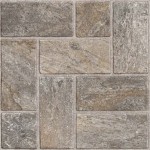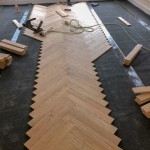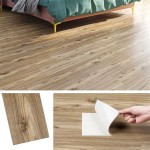Bathrooms With Slate Tile Floors
Slate tile flooring is a popular choice for bathrooms because it is durable, water-resistant, and easy to clean. Slate tiles have a naturally textured surface that can help to prevent slips and falls, making them a safe choice for wet areas. They are also very versatile and can be used to create a variety of different looks, from traditional to contemporary.
Benefits of Slate Tile Floors in Bathrooms
There are several benefits to using slate tile flooring in bathrooms, including:
- Durability: Slate is a very durable material that can withstand heavy foot traffic and everyday wear and tear. It is also resistant to scratches and chips, making it a good choice for families with children or pets.
- Water-resistance: Slate is a naturally water-resistant material, which makes it a good choice for bathrooms. It will not absorb water if it is sealed properly, which can help to prevent mold and mildew growth.
- Easy to clean: Slate tile floors are easy to clean. They can be swept, mopped, or vacuumed just like any other type of tile floor. It is important to use a mild detergent when cleaning slate tile floors, as harsh chemicals can damage the finish.
- Slip-resistant: Slate tiles have a naturally textured surface that can help to prevent slips and falls. This makes them a safe choice for wet areas, such as bathrooms.
- Versatility: Slate tiles are very versatile and can be used to create a variety of different looks, from traditional to contemporary. They can be used in both small and large bathrooms, and they can be paired with a variety of different colors and styles of fixtures and finishes.
Types of Slate Tile Floors
There are several different types of slate tile floors available, including:
- Natural slate: Natural slate is quarried from the earth and has a natural cleft surface. This type of slate tile is very durable and has a unique, rustic look.
- Honed slate: Honed slate is quarried from the earth and then ground to create a smooth surface. This type of slate tile is less durable than natural slate, but it has a more refined look.
- Tumbled slate: Tumbled slate is quarried from the earth and then tumbled in a machine to create a worn, aged look. This type of slate tile is very durable and has a natural, rustic look.
- Gauged slate: Gauged slate is quarried from the earth and then cut to a uniform thickness. This type of slate tile is very durable and has a clean, modern look.
Choosing the Right Slate Tile Floor for Your Bathroom
When choosing a slate tile floor for your bathroom, there are several factors to consider, including:
- The size of your bathroom: The size of your bathroom will determine the size of the slate tiles that you can use. Smaller bathrooms will require smaller tiles, while larger bathrooms can accommodate larger tiles.
- The style of your bathroom: The style of your bathroom will help you to determine the type of slate tile that you choose. Traditional bathrooms will benefit from natural or honed slate, while contemporary bathrooms will benefit from tumbled or gauged slate.
- The amount of traffic: The amount of traffic that your bathroom receives will determine the durability of the slate tile that you choose. Natural slate is the most durable type of slate tile, while honed and tumbled slate are less durable.
- Your budget: The cost of slate tiles varies depending on the type of slate, the size of the tiles, and the finish. Natural slate is the most expensive type of slate tile, while honed and tumbled slate are less expensive.
Installing Slate Tile Floors in Bathrooms
Slate tile floors can be installed by a professional or a do-it-yourselfer. If you are not experienced in installing tile floors, it is best to hire a professional. Here are the steps involved in installing slate tile floors in bathrooms:
- Prepare the subfloor: The subfloor must be level and smooth before the slate tile can be installed. If the subfloor is not level, it will need to be leveled using a self-leveling compound.
- Layout the tiles: The tiles should be laid out on the floor to create the desired pattern. Once the tiles are laid out, they can be cut to fit using a wet saw.
- Apply the thinset: Thinset is a type of mortar that is used to attach the tiles to the subfloor. The thinset should be applied to the subfloor using a notched trowel.
- Set the tiles: The tiles should be set in the thinset and pressed down firmly. Once the tiles are set, they should be allowed to dry for 24 hours.
- Grout the tiles: Grout is a type of mortar that is used to fill the joints between the tiles. The grout should be applied to the joints using a grout float. Once the grout is applied, it should be allowed to dry for 24 hours.
- Seal the tiles: The tiles should be sealed to protect them from water and stains. The sealer should be applied to the tiles using a brush or a roller.

Bathroom Slate Floors Design Photos And Ideas Dwell

Bathroom Slate Floors Design Photos And Ideas Dwell

Slate Bathroom Floor Tiles Suppliers Manufacturers Factory Customized Granite Cobble Stone Wholesale Esta

Pro Cons Of Natural Slate Flooring Claude Browns

75 Slate Floor Bathroom Ideas You Ll Love August 2024 Houzz

How To Use Slate Tiles Like An Interior Designer Flooring
:fill(white)/www.toppstiles.co.uk/static/media/catalog/product/p/i/piscola_black_slate.jpg?strip=all)
Slate Bathroom Tiles Topps

Interior Design Ideas New Coastal Farmhouse

White Bathroom With Slate Floor Transitional

Slate Floor Bathroom Cottage Bhg








